|
Sword Fern (Polystichum munitum) is the largest native fern at Leaning Oaks. Big and showy it forms an important part of our garden landscape as well as occurring in the wild parts of the property. Sword fern is evergreen with the older fronds dying off after the new fronds have begun to emerge. Sword Fern was used by First Nations as a food item in times of scarcity. The rhizomes were peeled and roasted. I don't know if it is still used as a food item and I must admit when I look at the rhizomes they don't look particularly appealing.
In the garden they respond very well to light fertilizing several times over the growing season and the plants there grow to imposing sizes. On years when we don't get heavy snowfalls they sail through the winter, on snowy winters the big funnel shaped plants get flattened. There are ten species of Polystichum in British Columbia, two at Leaning Oaks, the other is the Polystichum imbricans (species #25).
0 Comments
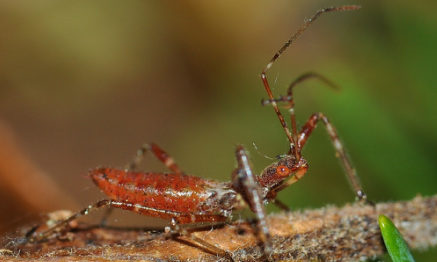 I laughed so hard when I saw this little guy; he so looked like something out of Dr, Suess! Dr. Rob Cannings brought me back to reality by identifying it as an immature member of the Reduviidae, or Assassin bugs, possibly Rhynocoris ventralis. There has been some very nifty natural history observations of parental care within assassin bugs where the parent actively guards their clutch against predators or parasites. This sort of behaviour is highly unusual in the invertebrate world.  In an attempt to narrow down the possibilities for which species of red-tailed Sarcophaga this was I started with looking for a list of flesh flies from B.C.. I came across a paper by Buckell and Spencer from 1945 in the Entomological Society of B.C.'s journal titled; A Preliminary List of the Flesh Flies of B.C.. Now what I found the most amazing was that out of the 27 species identified at that time for the province, 14 had been reared from the lesser migratory grasshopper, Melanoplus mexicanus! Cool, eh!? We don't know where the larva of this fly lived, but it would have been some moist, decaying matter or carcass. Members of this genus are often the first to arrive at a freshly dead corpse and therefore are important in the oh so fascinating study of forensic entomology. The rate of egg hatching and larval development at various temperatures and different conditions has been studied in depth in order to aid detectives that are attempting to pinpoint times of death. I remember being in one talk at an entomological conference where the researcher said that the best thing that a murderer could do was dump a body under a weather station (hmm, it seemed funny at the time...). 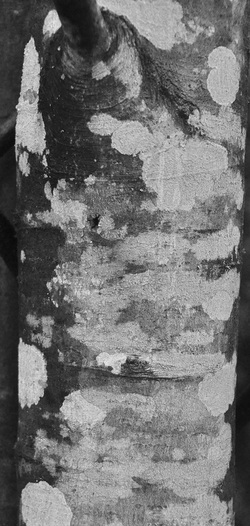 Scouler's Willow (sometimes call the Upland Willow) (Salix scouleriana) is a large shrub to small tree here at Leaning Oaks. Mostly, they go unnoticed except for a few glorious weeks in the fall when their many medium to small leaves turn bright yellow. Our biggest one is behind the deck over the pond and in the fall it reminds me of those fireworks that explode in sprays of yellow. The bark (pictured here) is almost always covered with patches of a light coloured lichen - which we haven't tried to identify yet. Scouler's Willow lives in a variety of habitats and as its alternate common name suggests it thrives in sites that are more upland than many species of willow. It's wood is sometimes used by carvers. It can be a useful species for vegetating an area, and branches, even quite large ones, root readily when stuck into the ground in moist soil. 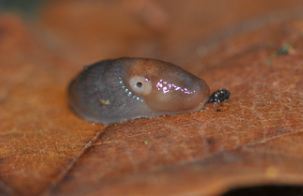 Or Chestnut Slug -or in several places , "no common name". Derocerus invadens went totally unnoticed by us until malacologist Robert Forsyth was visiting, turned over a tile and pointed it out. He also happens to be the person who wrote the Land Snails of BC. He knows his stuff. This species has been tracked on its invasive path from Italy in many parts of the world, seemingly only limited by cold winters. The first record in Canada was 1966 in a greenhouse in Quebec and then the first outside record was at UBC in 1974. Since then it has been found in various locations on southern Vancouver Island (Hutchison et al 2014). That same paper cites a study where this species was unable to survive a temperature colder than -6.4 deg. C. It hit -5 a couple of nights ago and we do get below that a number of times in the winter, so whether the tramp becomes another pest at Leaning Oaks is yet to be determined! 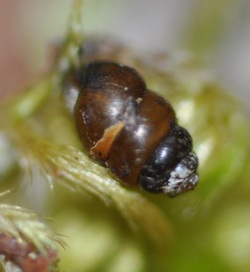 This will be one of the smallest organisms that we tackle on species a day! The lower photo shows one with a fingernail as a size reference. In 2010 the Threaded Vertigo was listed as Special Concern by the Committee on the Status of Endangered Wildlife in Canada, the full report is here. They seem to be found mainly on Bigleaf Maple trees on southern Vancouver Island, the Sunshine Coast and one on Saturna Island and have minimal dispersal capabilities -i.e. they ain't flying or jogging to the next tree, which may be a long ways a way when you are but a couple of millimetres long. 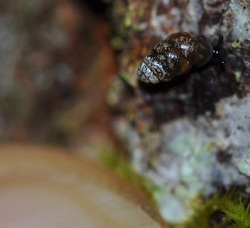 The ones that we have found have all been on two stems of one maple and are either in the cracks or on the moss...interestingly at eye height. I'm sure that isn't sampling bias. At present this species is just known as Nearctula sp. 1 . There isn't any question on the validity of the species, just that it is in a been a taxonomic muddle. Clavulina cristata is a mycorrhizal fungus that grows on the ground and is scattered beneath the Douglas-fir. They start out glowing white and become kind of peachy yellow with age. There are some complications with identification as there is another fungus that will attack this one, changing the colour so that it is similar to a different Clavulina. One author just suggests referring to all white pointy corals as belonging to the "Clavulina cristata group". I'm good with that!
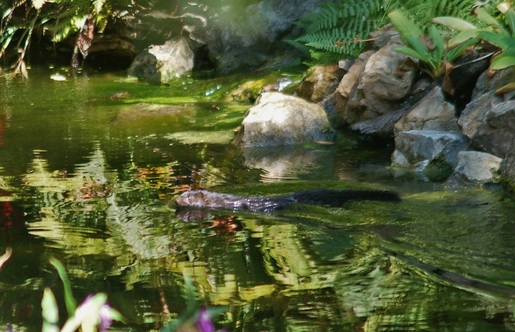 We have recorded two members of the weasel family here at Leaning Oaks, River Otter and Mink. Two others are possible, Pine Marten and Ermine, although to date, we haven't observed these latter two yet. Mink (Neovison vison ) likely are here more often than we know, hiding and hunting under our decks or in among the shrubs, largely out of site. Occasionally we catch a glimpse of one crossing a path or popping up onto on of the decks. Small birds often alert us to their presence, and alarm calls from Dark-eyed Juncos or Spotted Towhees are always worth investigating. Our longest looks tend to come when one visits the pond and hunts for Bullfrogs, such as the one in this photo. Bullfrog hunting by mink is a frenetic affair, with the mink moving rapidly and constantly, entering every small crevice and hollow around the edge of the pond, looking for hiding bullfrogs. 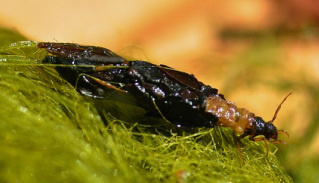 There is that startle factor when a little pile of fir needles or debris marches across the bottom of the pond. All spring and summer the bottom is alive with the larval caddisflies (Limnophilus in this case). The larval cases provide camouflage, shelter and protection for their soft bodies and stability in flowing currents. An excellent overview of this architecture was written by Rob Cannings and in the Royal BC Museum publication "Curious". http://curious.royalbcmuseum.bc.ca/caddisfly-architecture/The story of how the caddisfly got it's name is delightful: Hundreds of years ago in England, itinerant sellers of cloth fastened scrap pieces of cotton and silk to their clothing to advertise their wares. In older English these scraps are called cadices, so these salesmen were dubbed “caddice men”. The little caddisfly larvae that labour away in streams and ponds, covering themselves with bits of sand and plants, probably got their name from these once-familiar figures. (Dr. Rob Cannings) 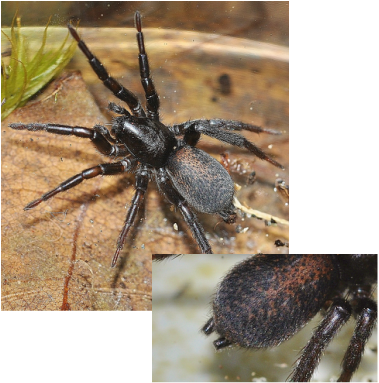 Spinnerets Spinnerets A member of the family Gnaphosidae or "stealthy ground spiders"--not a name that is going to win Zelotes fratis many friends I am afraid! They are not often encountered out in the open as they tend to to be mainly nocturnal, and spend time under logs, rocks or debris. This one was found at the edge of the Douglas-fir forest. They hunt on the ground, not using a web to capture their prey. The spinnerets are cylindrical, a bit like dual exhaust pipes and and often easy to see. Thanks to Claudia and Darren Copley for all of their help in searching for, identifying and wrangling of these guys (and most of the spiders to follow!  House Finches (Haemorhous mexicanus ) are year-round visitors here at Leaning Oaks, although, to our knowledge, we have not had this species nest on the property. Perhaps our place is too wooded for this species. They are most often seen at the feeder, where they are rather aggressive competitors against other birds. Most males are a raspberry pink colour, but occasionally we have a male that has a yellow pigment in place of the red. House Finches are rather recent immigrants to Vancouver Island, first appearing here in the 1930's. Since then they have spread up the east side of the island and then spottily over much of the rest of the island. They are often confused with Purple Finches, but House Finches have a shorter, rounder bill and heavily streaked sides. Rubbery, gelatinous and with a bit of a glow makes this fungus somewhat surreal growing from downed woody material and decaying stumps in damp areas. The spores are produced from the "teeth" or spines that extent from the lower surface. Pseudohydnum gelatinosum is the only jelly fungus with teeth. Cat's Tongue or Jelly Hedgehog are two other descriptive English names. There are two forms, one with a stalk like this one and without. The stalkless for is more common in the east. Where we are not.
They really are blue!! Or at least this one was. Prophysaon coeruleum comes in a range of blues and greys so I was very pleased that my lifer was not some dull grey.
We have had squares of cardboard out all over the property for the past three years and the checking has been a bit perfunctory unfortunately. Well, maybe not so much perfunctory as without much hope. There has been a lot of peering for a whole lot of snails, isopods or slug frass. Today that all changed! The little endangered slug (SARA listed) is just over a centimetre and a half long and was was snuggled in to the corrugations. This species has been found in locations around Leaning Oaks, but never very often and never in abundance. There seemed to be no reason that it wouldn't be here. The fabulous local organization, Habitat Acquisition Trust or HAT has a program enlisting the help of landowners to put out the cover objects and then monitor them to get a better idea of the Blue-grey Taildropper range. They have also had some great identification brochures made to help differentiate between this critter and some of the other common species in the Victoria area. Information on this program with links to the ID guide are here. There are times where a species may seem at first blush to be rare, but once there is a concerted effort to search, it may not be the case. With this species, the HAT work has shown that they do occur in more areas than previously thought - but that they are not a common slug. Inventory is the best way to assess how at risk a species is.  The Order (Scolopendromorpha) that this centipede, Scolopocryptops spinicaudus belongs to contains the largest known centipedes; there is one species within it from Venezuela that grows to 28cm! This was not that large...a mere 6-ish centimeters. The English name refers to the Order, not Leaning Oaks unfortunately. They have formidable forcipules located under their head (left had side of the photo) that they use to capture their prey (smaller arthropods) and inject venom. I couldn't find out if this species can do damage to you or I. Although all centipedes to have a toxic venom, most are unable to penetrate our tough skin. And the toxicity may generally enough to cause swelling and some pain. These guys are built for speed, and if you look at the plates, you see that they alternate between larger and smaller. This helps to reduce the undulations that come naturally from a slender object running forward at great speeds. And because everyone want to know,"What is the difference between a centipede and a millipede?" I have always looked at the number of legs per segment and if it is one, then it is a centipede. There are other characteristics and this chart sums them up. |
AuthorsTwo biologists on a beautiful property armed with cameras, smart phones and a marginal knowledge of websites took up the challenge of documenting one species a day on that property. Join along! Posts and photographs by Leah Ramsay and David Fraser (unless otherwise stated); started January 1, 2014. Categories
All
Archives
May 2025
|
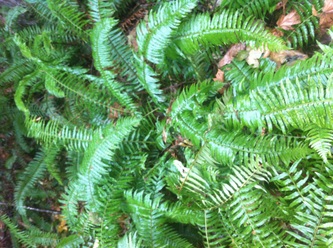
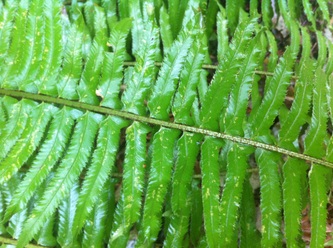
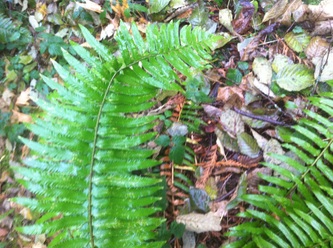
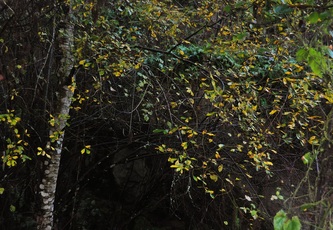
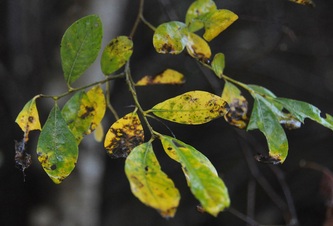
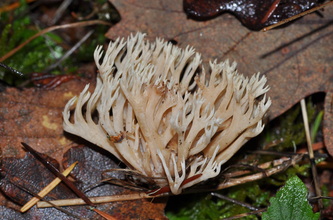

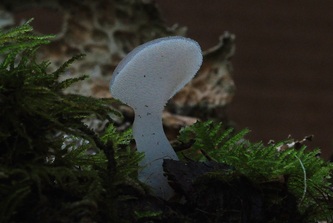

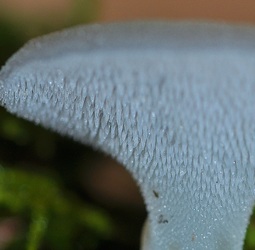
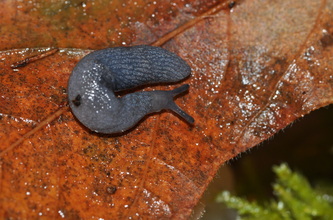
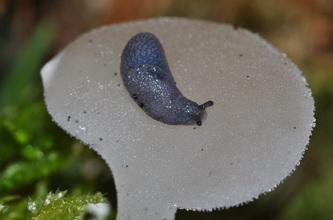
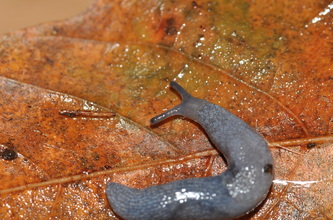
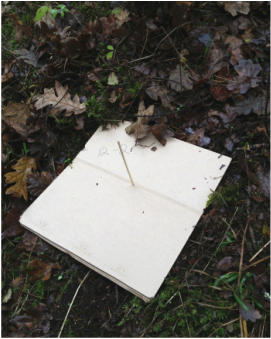
 RSS Feed
RSS Feed